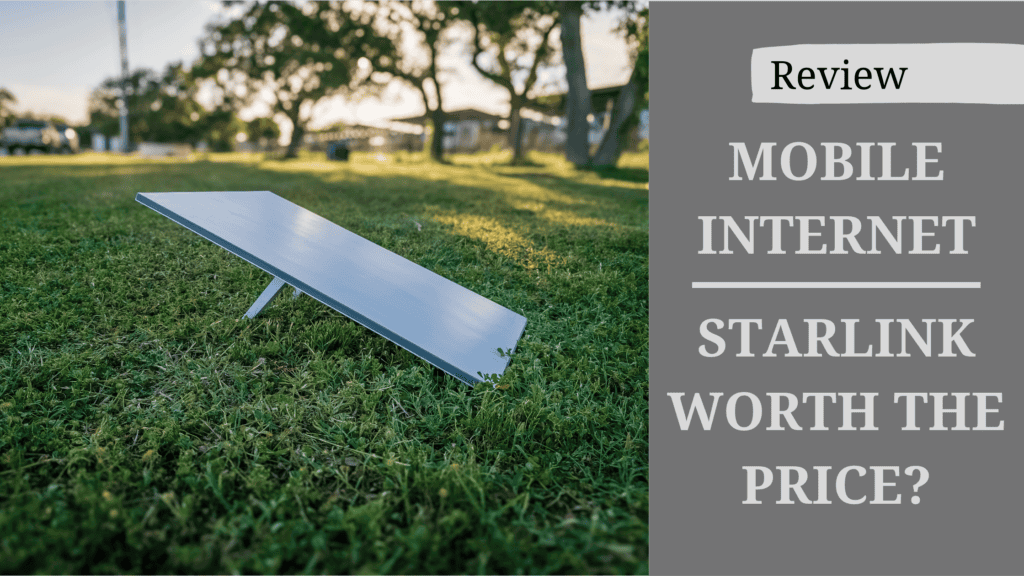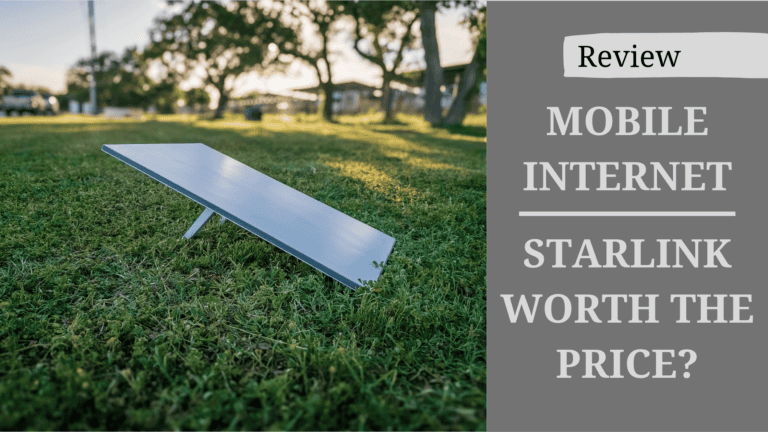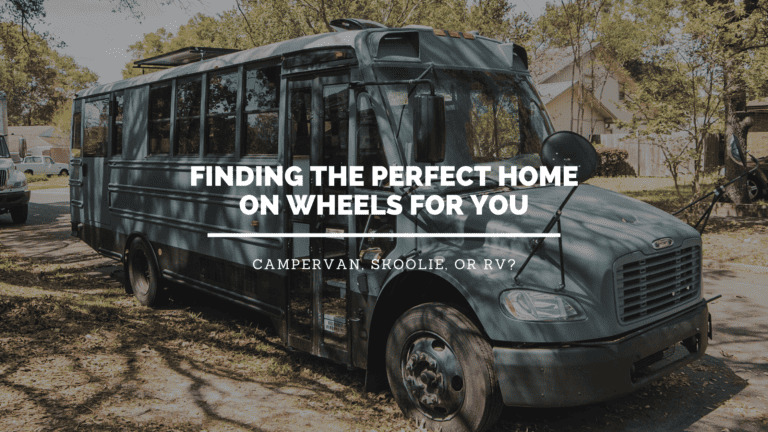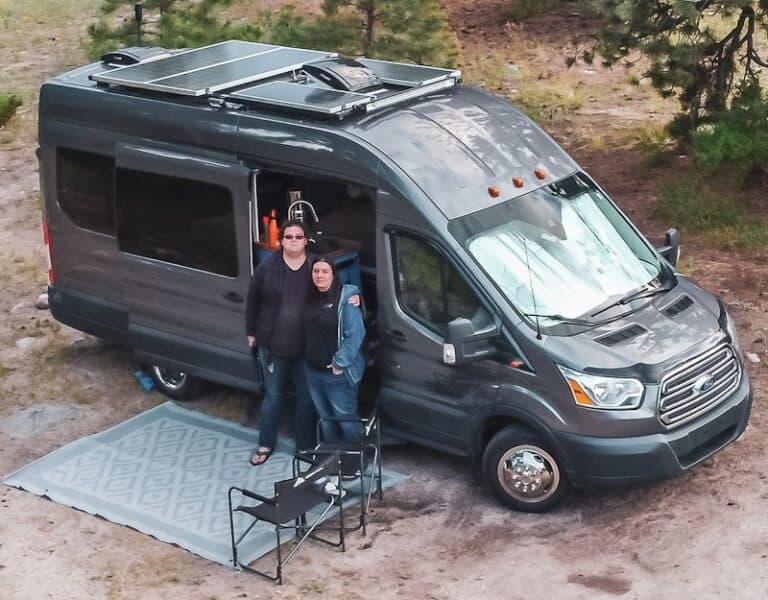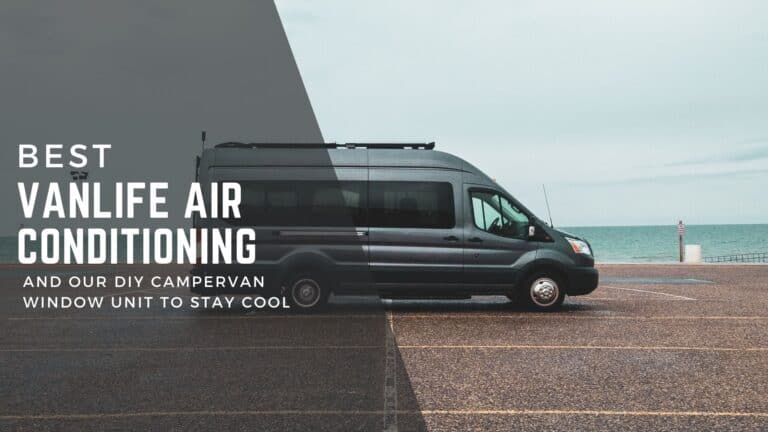Is it possible to stay connected and have high-speed internet while traveling full-time in a campervan or RV? Good mobile internet is something that everyone who has traveled knows can be a challenge. Recently, though, things have seemingly started to change. The promise of high-speed satellite internet that is both reliable and easy to set up has been spreading thanks to Starlink. SpaceX’s attempt to provide reliable and fast internet access to anyone, anywhere. Is Starlink really that good? Can it replace the ways people living the vanlife and RVing have been using to stay connected while on the move? Is Starlink really better than using a good mobile hotspot? Most importantly, is Starlink actually worth it for vanlife and RVing?
We’ve been traveling full-time with online jobs for the past four years and have tried every way to get good internet while traveling. Hopefully, our experience can help you decide if Starlink is worth the price.
Types of Mobile Internet For Vanlife And RVing
Unfortunately, staying connected on the road isn’t as simple as living in a house or apartment. There isn’t a simple one-size-fits-all solution to mobile internet; staying connected tends to be more of a patchwork of solutions that work best for you, depending on your internet needs while traveling. There is free public WiFi, phone tethering, dedicated 5G hotspots, and satellite internet. Each has its own benefits and downsides.
Public Wifi
Going to the local coffee shop to get some online work done is a commonly used example of public Wi-Fi. Most coffee shops have public Wi-Fi, some public parks do, and the local library has it. Public Wi-Fi is all over the place. The issue with using public Wi-Fi is that it is not secure. Public Wi-Fi is just that—it is public. This means other people who have the right tools can see all of your network traffic when connected to public Wi-Fi.
If you plan on using public WiFi while traveling, we highly recommend using a VPN. A VPN, or Virtual Private Network, encrypts your data and keeps it safe when using public WiFi. The VPN service we recommend is NordVPN. NordVPN keeps your data safe when using public WiFi and is also the fastest VPN service we have tested.
Internet speeds vary with public WiFi, but it’s never very fast.
Phone Tethering / Dedicated Hotspots
We’re grouping Phone Tethering and having a Dedicated hotspot together because they both work in the same way. Both ways of connecting to the internet use data from a mobile carrier, typically either 4G or 5G data coverage. Most phones can run a WiFi hotspot or tether to a laptop with a USB cable to share the phone’s data coverage.
Dedicated 4G/5G hotspots work the same way. They have a sim card, and you pay for data from a mobile carrier just like you do with a phone plan. The main advantage of having a dedicated WiFi hotpot vs running a hotspot off of your phone is speed. Dedicated hotspots have significantly faster WiFi speeds than a phone hotspot does.
The main issue with using a mobile hotspot of any kind is internet availability when traveling. Because a hotspot uses mobile data just like your phone, there can be many times when there just isn’t enough cell signal to get online. When traveling, we use apps such as Coverage? and Opensignal to check the area we are going to make sure there is adequate cell coverage for the carrier we use. We also have a WeBoost cell signal booster on our RV to help boost the signal a bit in areas that do not have the best connectivity.
The average speeds we get with our dedicated hotspot are around 10 Mbps download and 3 Mbps upload. It’s not great, but we’ve been able to make it work for most of our needs.
Satellite Internet
The last way to get connected while on the road is satellite internet. In the past, satellite internet involved a massive dish that needed to be permanently installed, was typically extremely slow, and was only really used in rural areas where cable internet didn’t exist.
Over the past few years, though, that has started to change. Satellite internet dishes have been getting smaller, and new providers are offering speeds that rival that of cable internet. Every year, speeds are increasing while the cost of using satellite internet decreases. Now, with providers such as Starlink, mobile satellite internet is finally starting to become an option for staying connected while traveling.
What Is Starlink, And Can It Be Used For Vanlife And RVing
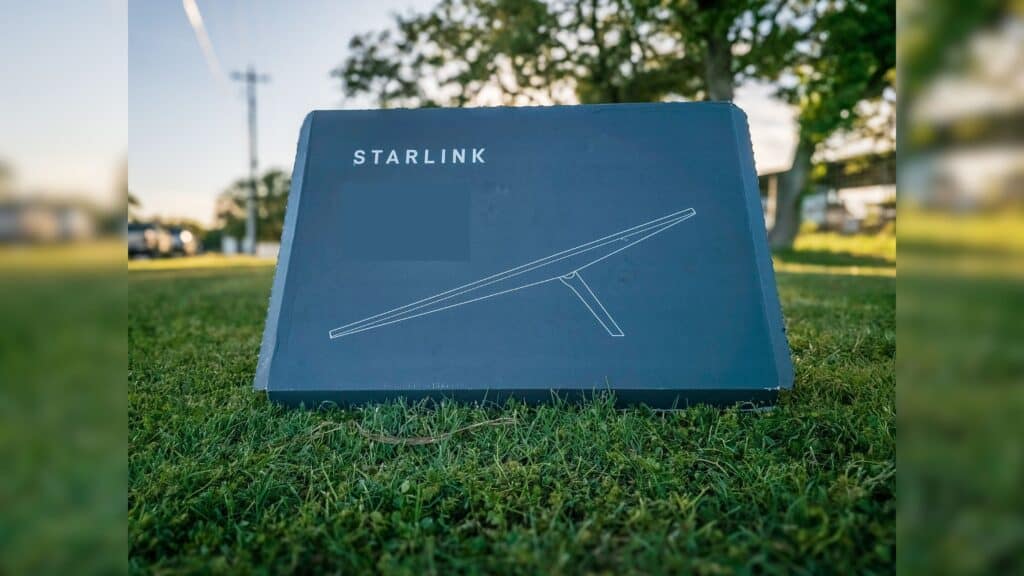
Starlink is increasingly becoming the go-to solution for mobile internet for Vanlife and RVing. But why? Is Starlink actually worth the high initial setup cost, and can it actually provide stable, fast internet when traveling on the road?
Starlink works by having thousands of satellites in orbit. Currently, the Starlink network comprises roughly 5,500 satellites, with plans to expand to close to 40,000 satellites by the completion of the network’s construction. All of those satellites provide the stable network that makes Starlink work. At any given time, a couple dozen of their satellites fly overhead, relaying the internet signal down to small portable dishes that connect to the network.
Like most mobile internet services, Starlinks mobile service has a higher startup cost than most people are used to when living in a house or an apartment. The startup cost is $599 for the hardware and $150 a month for unlimited data. At $750, Starlink has a high startup cost for internet and is about double what most dedicated hotspots charge for hardware and data.
Benefits of Starlink for Vanlife and RVing
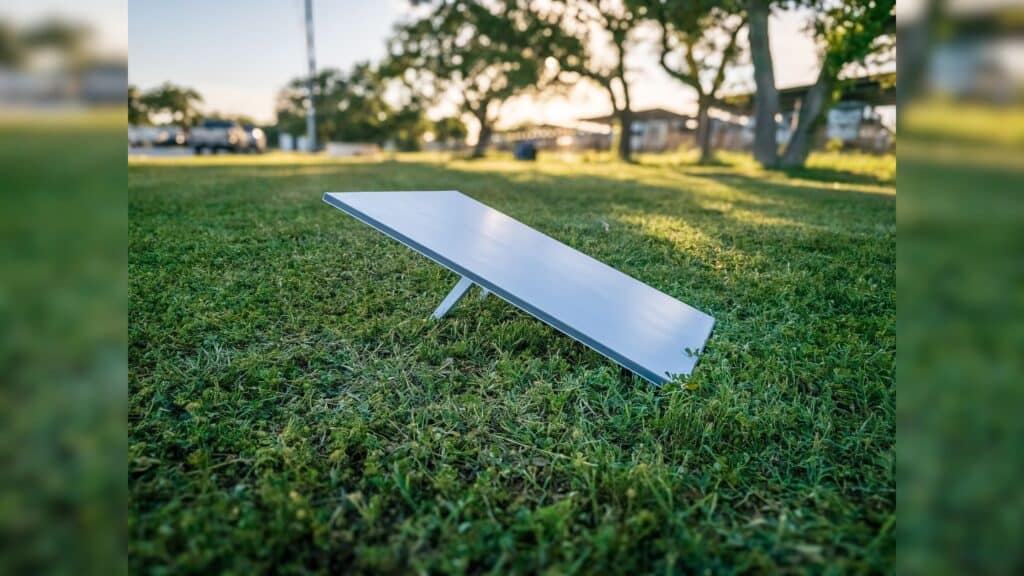
Satellite internet has many benefits and a handful of downsides. The biggest benefit is being able to have high-speed internet service from almost anywhere. With Starlink, you get a small portable dish set out on the ground that, so long as you have a clear view of the sky, will provide consistent, stable high-speed internet. The Gen 3 Starlink dish that was released at the beginning of 2024 uses a small built-in kickstand to support the dish, unlike the Gen 2, which had a full stand and motors to keep the dish aligned.
The Starlink satellite network is now robust enough that the Gen 3 dish no longer needs the built-in motors and instead can simply be set up on the ground where you are. There are also additional adaptors to be able to mount the Starlink dish to either a pole, or even flat mount the dish to the roof of your campervan or RV.
Being able to get connected online with high speed internet wherever you are, so long as there is a clear view of the sky, opens up so many possibilities for traveling while having internet access. There is no need to worry about whether or not there will be a cell signal at the location you’re heading to. No more issues with slow hotspot speeds. It’s just pulling into your camp spot, setting out the Starlink dish, and you are online. For those who work online while traveling, having satellite internet is hard to beat.
Recently Starlink even opened up the option to use Starlink while in motion. So if you have your dish flat mounted to your campervan or RV roof, you are not able to pay an extra fee and use the same high-speed internet Starlink provides while heading down the road.
What To Consider With Starlink For Vanlife And RVing

Obstructions. The primary issue to consider with Starlink is obstructions. Anything that gets in between your Starlink dish and the sky blocks signals from the satellites in orbit and causes internet issues. Tree cover, parking in a city with lots of tall buildings, anything that can block the satellite signal. Where there are obstructions, there will not be a stable internet signal.
If your campervan or RV is off the grid and relies on solar power, then this isn’t as much of an issue. Solar power already needs a clear, unobstructed view of the sky. Just don’t expect to park deep in the woods underneath the trees and have Starlink work.
In all of our testing, Starlink doesn’t seem to be affected by weather, cloudy days, rain, or clear skies; we have had the same level of performance. We have even managed to park in some shady areas with trees and while Starlink was not stable, we were able to get enough signal through the tree cover to be able to stream videos with only minimal buffering.
The other main consideration with Starlink is power draw. While dedicated mobile hotspots only draw a few watts and can typically be powered off of a small battery pack, Starlink can draw up to 100 watts of power continuously. With an even higher power draw, if you have the snow melt feature turned on where the dish heats up.
Our Experience With Starlink While Traveling
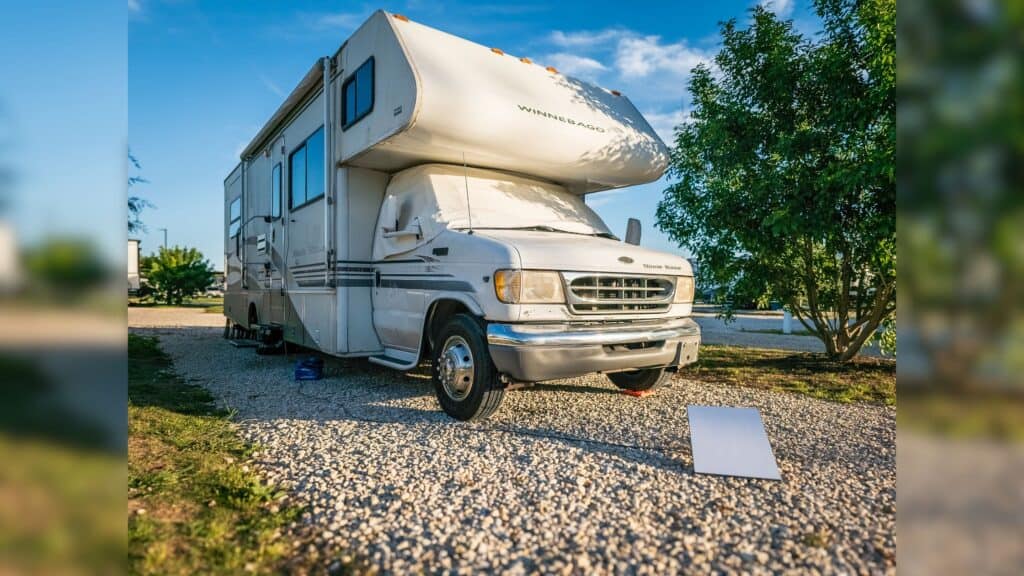
We decided to take the leap and get Starlink this year. With online jobs that require a stable internet connection for video calls, we thought that maybe Starlink could solve some of the internet issues we have always had while traveling. Our mobile hotspot we had been using for the past few years worked well enough but it was a constant struggle. Always making sure where we wanted to go would have a signal, whether the signal strength was enough for work, and showing up to a site that promised full bars online to end up having only one bar of service.
Everywhere we went in our campervan, we had to consider whether there was a clear view of the sky for our solar panels and whether there was a strong enough cell signal for our hotspot. Since making the switch over to Starlink, we only have to worry about the clear view of the sky. While we have to consider tree cover and obstructions when using Starlink to have a good internet connection, It’s something that was already on our mind everywhere we stayed because we rely on our solar panels to keep our off-grid campervans batteries charged.
We are also able to get internet speeds that in the past we only dreamed about. it’s common for us to have speeds of an average download of 200 Mbps and upload of around 15-20 Mbps. Starlink has definitely been a game changer for us and has made having reliable internet while traveling much easier and faster.
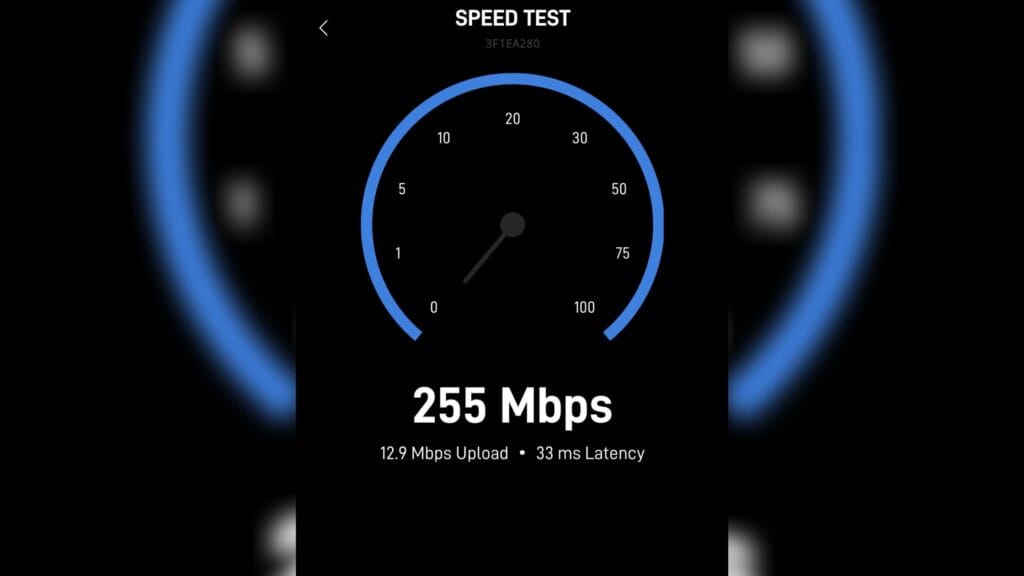
TLDR;
There are several different ways to get online and have internet access while living vanlife and RVing: using public WiFi, having a dedicated mobile hotspot, or using a hotspot off of your phone. And now, increasingly, you can have satellite internet wherever you travel. The best mobile internet solution really is up to you, but for those who work full time and rely on fast, stable internet, Starlink is hard to beat.
There is a high initial setup cost of $599 for the hardware and $150 per month for data, but for us and many people, we know the high setup cost is worth it. Having speeds that rival cable internet while being out in the middle of nowhere down a forest road just can not be beaten by a mobile hotspot.
